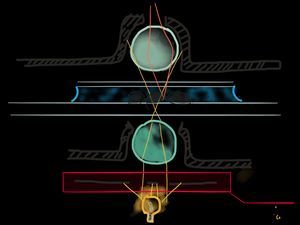Practical Resource – making a DIY, LED light source
 Feb 14, 2016 • 4:46 AM UTC
Feb 14, 2016 • 4:46 AM UTC Unknown Location
Unknown Location 140x Magnification
140x Magnification Unknown
Unknown
bullm
Learn about the author...
3posts
0comments
1locations
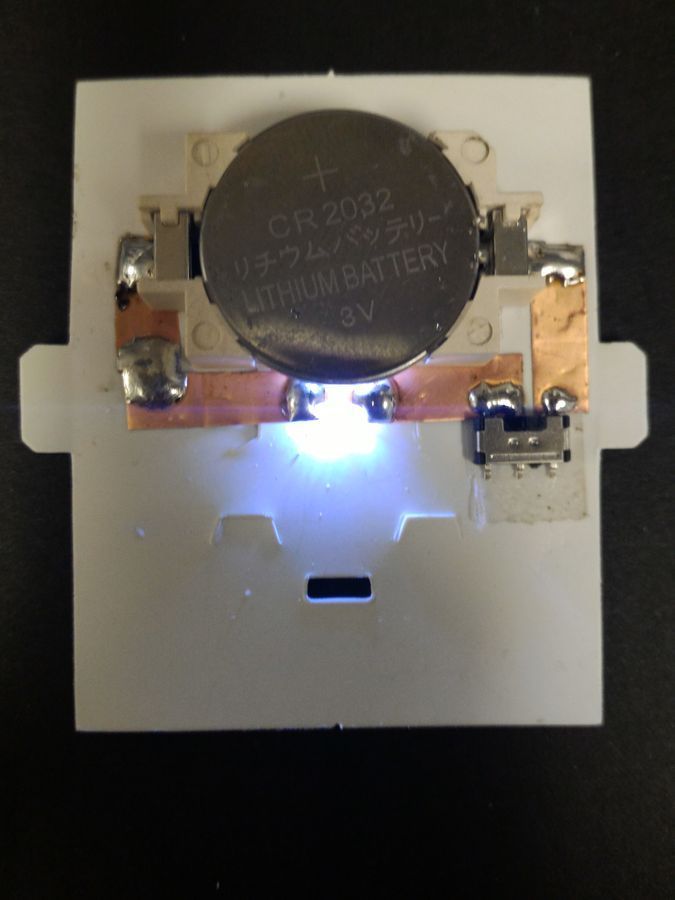
Introduction:
A great microscopist once reminded me that: “you can’t see 100% of the photons that your illumination does not provide” (as an insightful corollary to the famous Gretzky quote: “you miss 100% of the shots that you don’t take.”) Said another way, your illumination determines what you can and cannot see . For this reason, this post strives to start off as a practical resource for illumination by sharing one approach to making a second LED light source. My hope is to provide enough detail that newcomers can use this as a jumping off point and experienced microscopists can suggest improvements across the board.
Solar (or room-light!) microscopy is very powerful, but sometimes it is just enough easier to document your amazing findings on a cell phone camera when you have a mobile light source. This is especially true when you want to gift your second microscope to someone you care about. The ideal outcome is that they are as hooked as you are so it helps if initially you can demonstrate the power of the tool relatively accessibly. One way to do this is by facilitating camera imaging by equipping them with the same tool you have in your kit — the battery powered LED.
Another great aspect of having a LED is the window it opens to dark field type implementations which can sometimes help you pick out that extra feature of interest. See https://wp.me/p5uBMl-1PA
In this post, I want to share a simple “tutorial” for making a second light source. I welcome comments from the community and hope that we — as a collective — can develop the ideal, DIY “second battery powered LED light source”.
The parts you’ll need:
For the following approach you need just a couple of components and tools
A great microscopist once reminded me that: “you can’t see 100% of the photons that your illumination does not provide” (as an insightful corollary to the famous Gretzky quote: “you miss 100% of the shots that you don’t take.”) Said another way, your illumination determines what you can and cannot see . For this reason, this post strives to start off as a practical resource for illumination by sharing one approach to making a second LED light source. My hope is to provide enough detail that newcomers can use this as a jumping off point and experienced microscopists can suggest improvements across the board.
Solar (or room-light!) microscopy is very powerful, but sometimes it is just enough easier to document your amazing findings on a cell phone camera when you have a mobile light source. This is especially true when you want to gift your second microscope to someone you care about. The ideal outcome is that they are as hooked as you are so it helps if initially you can demonstrate the power of the tool relatively accessibly. One way to do this is by facilitating camera imaging by equipping them with the same tool you have in your kit — the battery powered LED.
Another great aspect of having a LED is the window it opens to dark field type implementations which can sometimes help you pick out that extra feature of interest. See https://wp.me/p5uBMl-1PA
In this post, I want to share a simple “tutorial” for making a second light source. I welcome comments from the community and hope that we — as a collective — can develop the ideal, DIY “second battery powered LED light source”.
The parts you’ll need:
For the following approach you need just a couple of components and tools

foldscope back-mounted aperature (or cut your own from the scraps!) An LED (I used https://www.sparkfun.com/products/12621) copper tape ( https://www.sparkfun.com/products/10561 )* a switch ( https://www.sparkfun.com/products/9609 ) A battery and clamp (similar to: http://www.mouser.com/ProductDetail/Renata/SMTU2032-LFTR/?qs=sGAEpiMZZMvxTCYhU%252bW9mT9W%2ft5JZly7 )* A soldering iron and solder* Optional: a dab of epoxy (to support the assembly against field use) Optional: a little double stick tape helped me to hold things in position (*Note: if you don’t have copper tape but do have some extra wire, I also had success with a end stripped wire and a dab of glue to hold them in place)
(*Note2: We just had one lying around so I don’t know the precise supplier; anyone find something similar for a better price? Please share it if you do!)
(*Note3: alternatives to soldering irons include: http://www.amazon.com/Bare-Conductive-Electric-Paint-10ml/dp/B00B888LQ8 , but I have not personally tried this product)
Assembly process:
I recommend starting at the LED or the switch and ending with the orientation of a battery.
My process started at the switch:
(*Note2: We just had one lying around so I don’t know the precise supplier; anyone find something similar for a better price? Please share it if you do!)
(*Note3: alternatives to soldering irons include: http://www.amazon.com/Bare-Conductive-Electric-Paint-10ml/dp/B00B888LQ8 , but I have not personally tried this product)
Assembly process:
I recommend starting at the LED or the switch and ending with the orientation of a battery.
My process started at the switch:
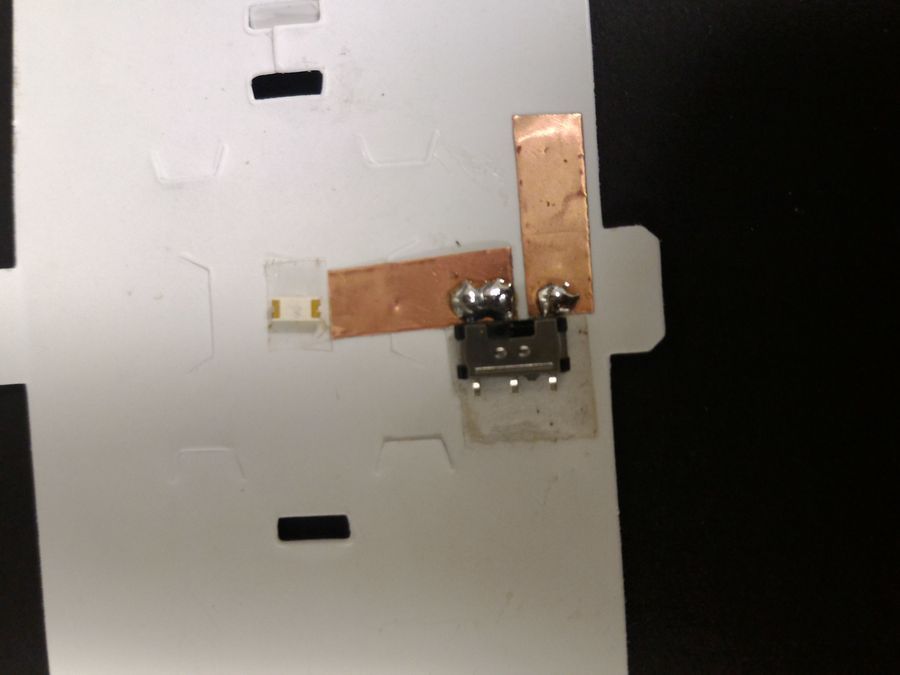
An image of my switch. Notice that the two pieces of copper tape are not in contact and that two of the three pins are soldered to the left and only one to the right. Notice that for the switch, I put the copper tape down first being careful to make the two pieces close enough for the switch to reach both without them making contact on their own. Something that helped me was a double stick tape to hold the switch in place while I soldered it.
I then soldered the LED in the center. At this point, I don’t need to think about the orientation of the LED leads (because I can flip the battery later), So I just focused on making sure I had the slight emitting side down (with leads up) and centered over the hole in the back foldscope mount.
I then soldered the LED in the center. At this point, I don’t need to think about the orientation of the LED leads (because I can flip the battery later), So I just focused on making sure I had the slight emitting side down (with leads up) and centered over the hole in the back foldscope mount.
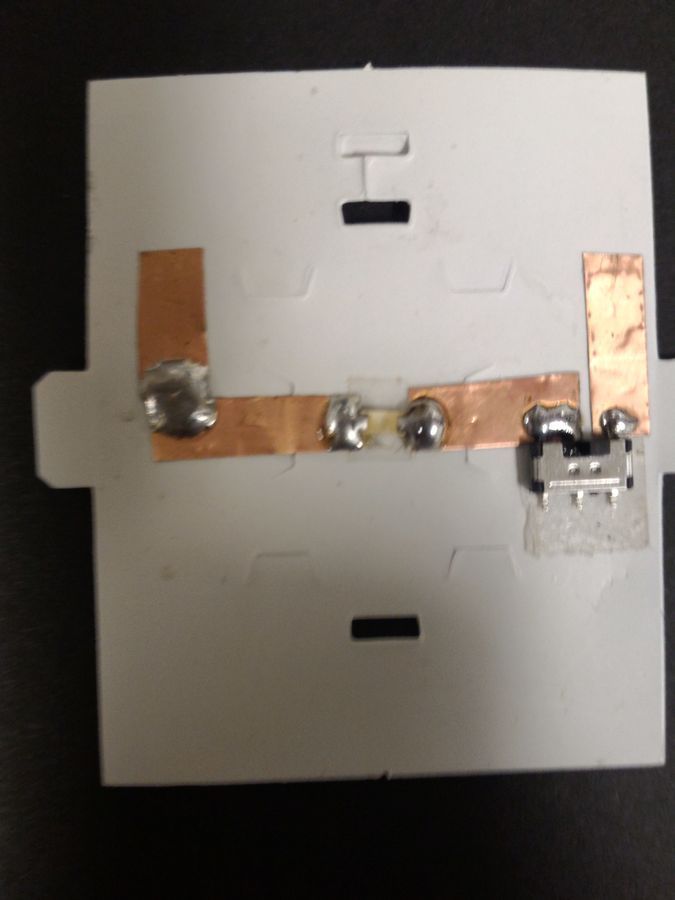
The configuration post-LED soldering in the center and the addition of the second copper tape ‘L’. Notice that I had to add a bead of solder to make sure I had a reliable connection between copper tapes. Note that the adhesive of the copper tape is an effective insulator. Next, I made certain that the switch was on and pushed my battery assembly down into place. When contact was made in the correct orientation, the LED illuminated. Following is an image of the illuminated LED, post soldering on of the battery. Notice that I pushed the battery as close the center as possible to make it a little less unwieldy on the back of the foldscope.

The final assembly with LED illuminated.
As a final step to help allow it to hold up longer, I added a couple of dabs of epoxy to the components (being careful not to glue my switch in the ‘off’ position!). I found this made the piece feel more put together, despite my ugly solder joints!
As a final step to help allow it to hold up longer, I added a couple of dabs of epoxy to the components (being careful not to glue my switch in the ‘off’ position!). I found this made the piece feel more put together, despite my ugly solder joints!
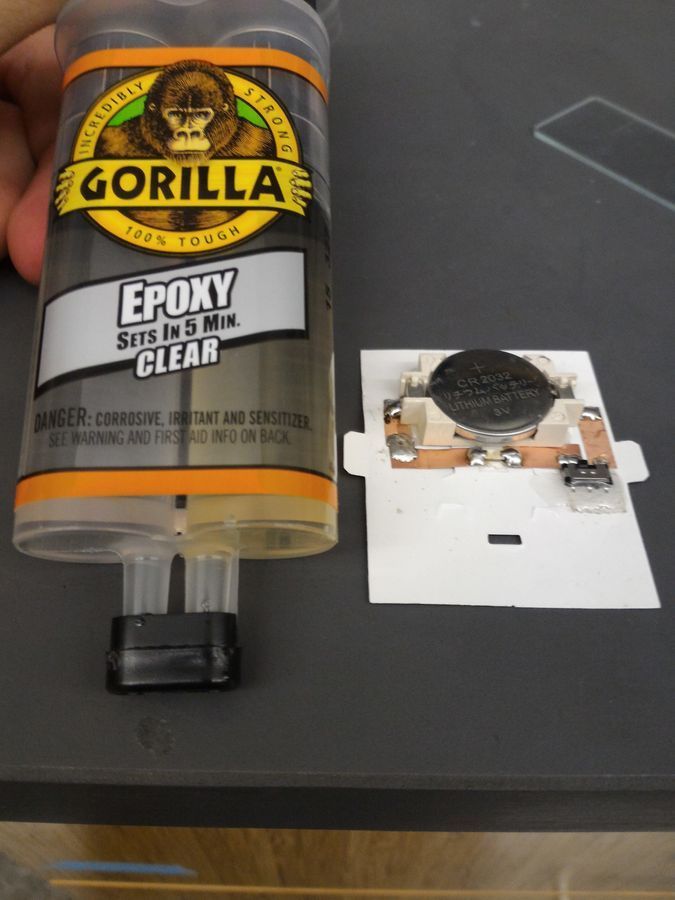
A little epoxy did the tick. Now for the fun part: using the new light source.
For those of you still with me, let’s see how the new source holds up. We’ll put it through its paces with emphasis on looking at the following couple of questions:
Is this LED bright enough? Does it have nice white balance? Is this setup compatible with dark field? Are there any unexpected problems with the design? I imaged some old samples of Bat Star larvae because I now they are very feature rich. Let’s see if we can see the cilia along the edges of the organism (which you can see in darkfield with the included light source).
First a collection of images in brighfield:
For those of you still with me, let’s see how the new source holds up. We’ll put it through its paces with emphasis on looking at the following couple of questions:
Is this LED bright enough? Does it have nice white balance? Is this setup compatible with dark field? Are there any unexpected problems with the design? I imaged some old samples of Bat Star larvae because I now they are very feature rich. Let’s see if we can see the cilia along the edges of the organism (which you can see in darkfield with the included light source).
First a collection of images in brighfield:
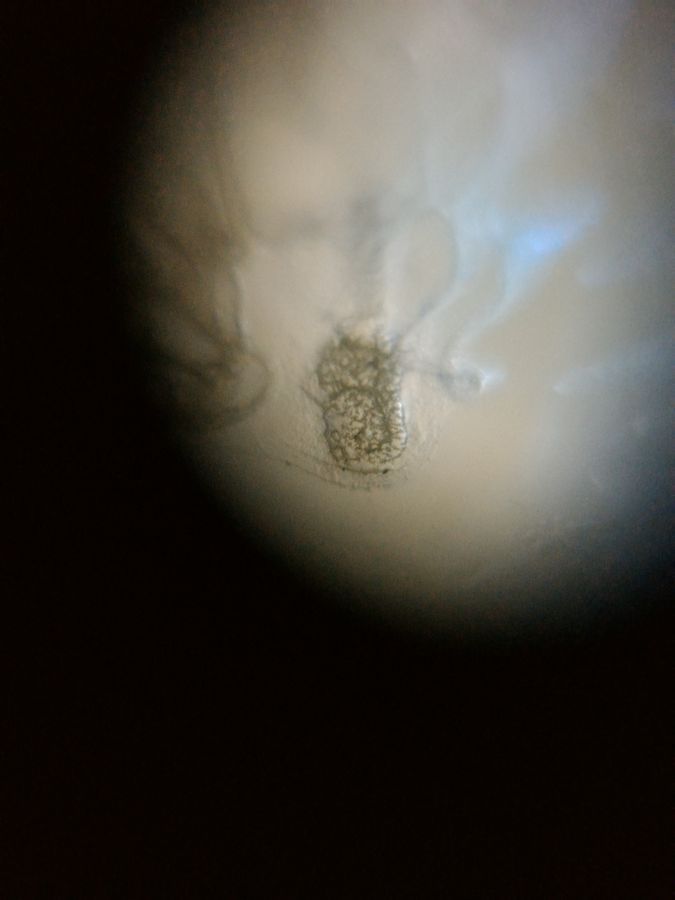
Full zoom out of the brightfield image of the larvae. Notice that I had a little trouble centering my magnetic coupler!
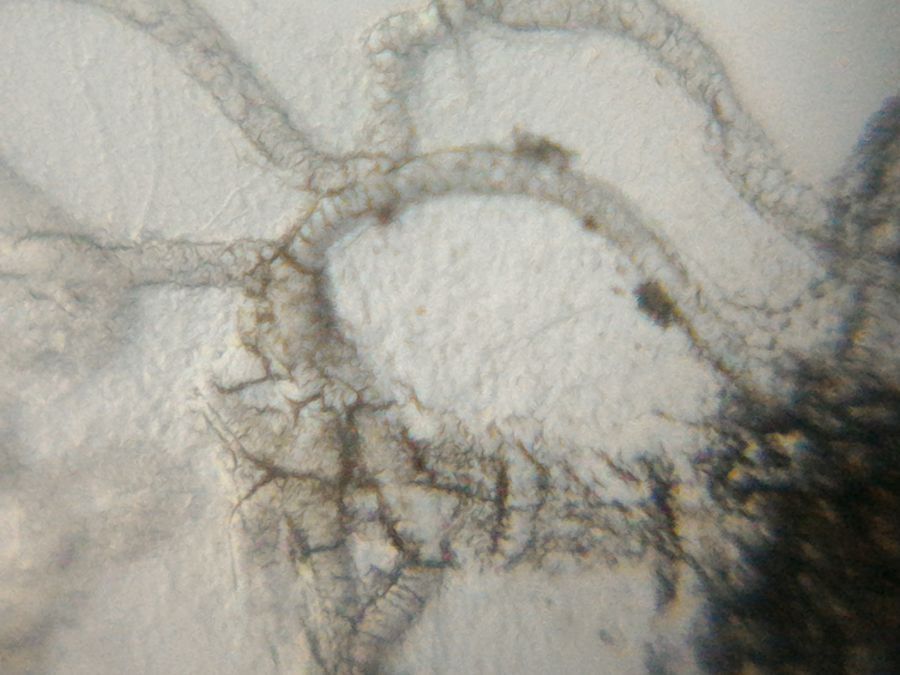
A look at the digestive tract of the larvae in brightfield.
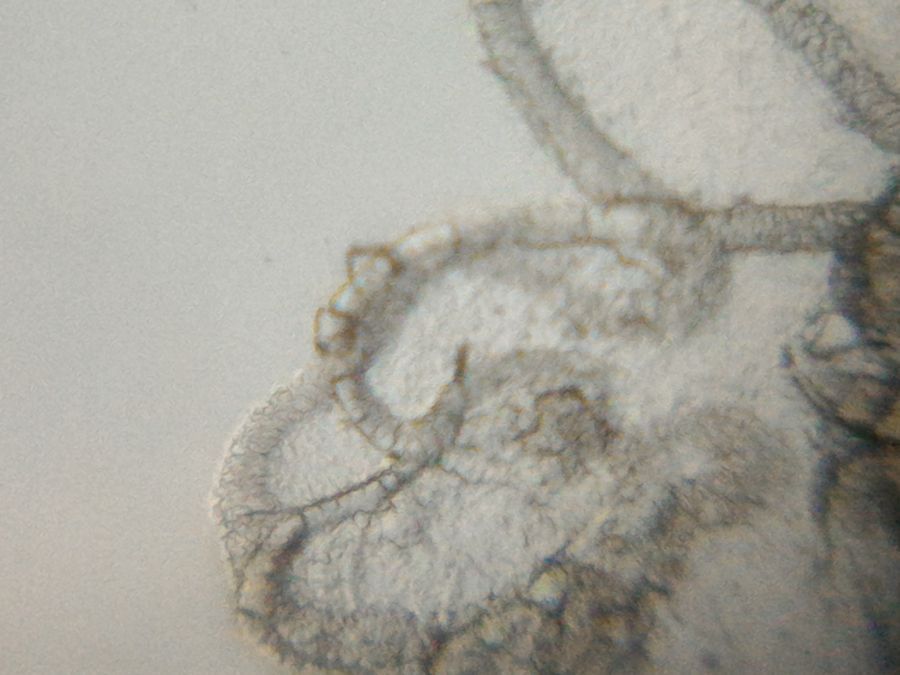
Lower focal plane of ciliary band. Brightfield.
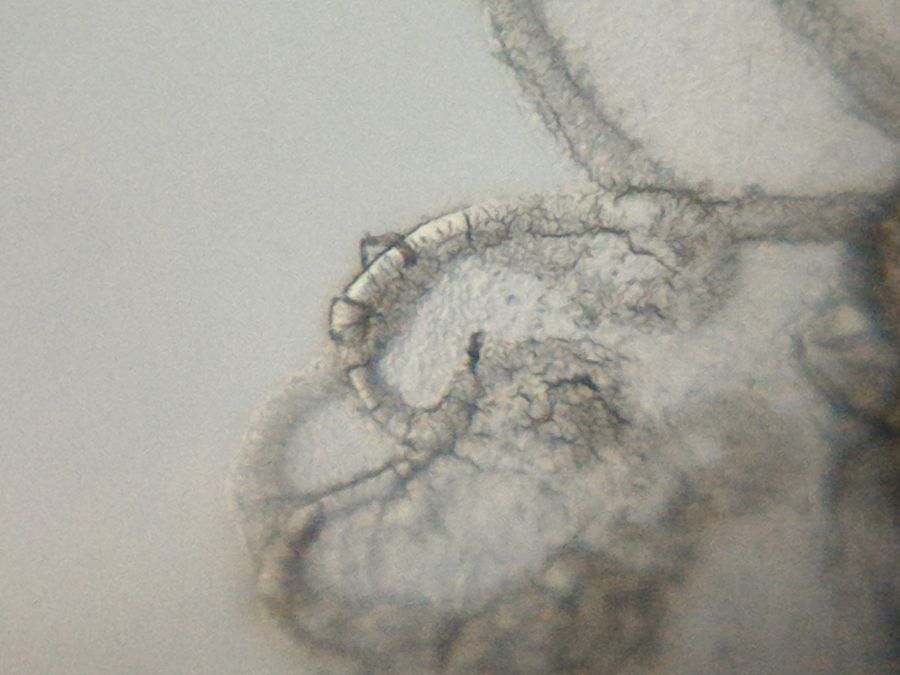
Upper focal plane of ciliary band, brightfield. Now let’s move on to dark field implemented like the microcosmos dark field post. ( https://wp.me/p5uBMl-1PA )
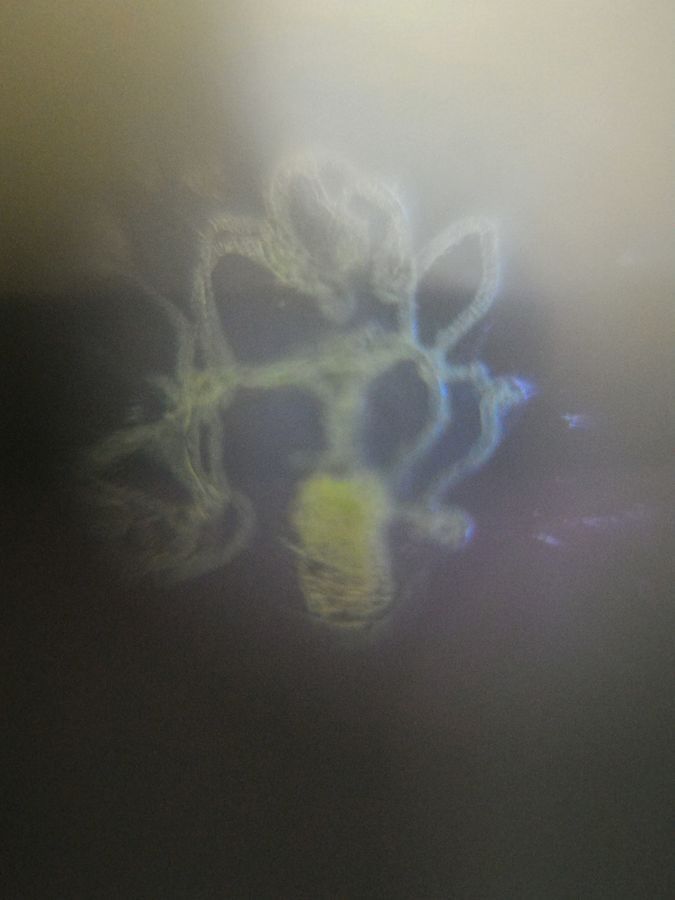
Full zoom out of the same organism as above. Notice the difference between this darkfield image and the brightfield one above. You can see the bands really well. And look how much that gut scatters. We can also see individual cilia in darkfield with our DIY LED setup.
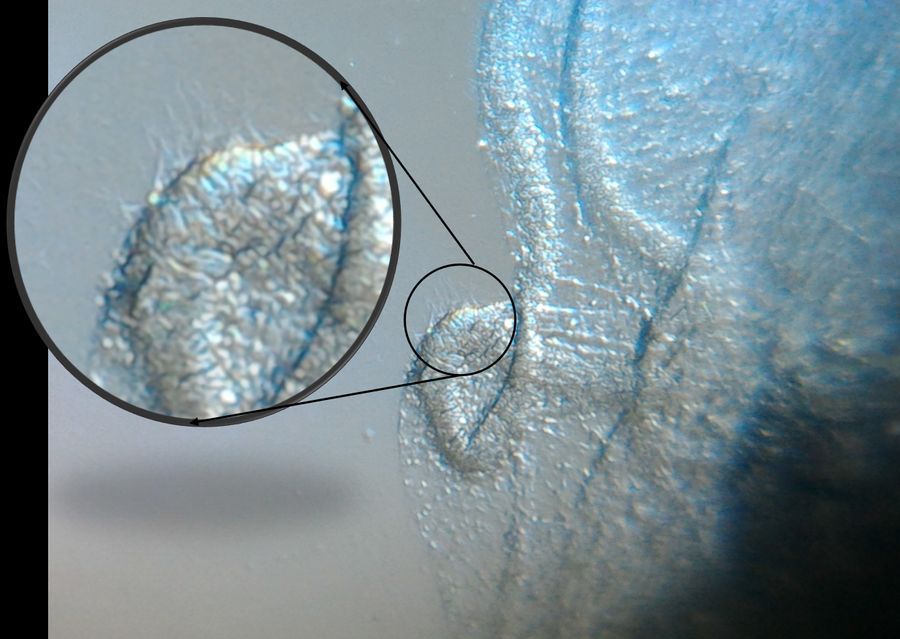
Wishing all “micro-cosmonauts” happy exploration!
Sign in to commentNobody has commented yet... Share your thoughts with the author and start the discussion!
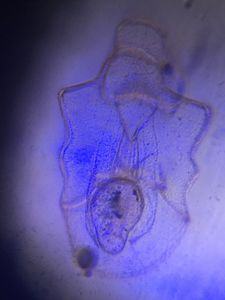
 0 Applause
0 Applause 0 Comments
0 Comments